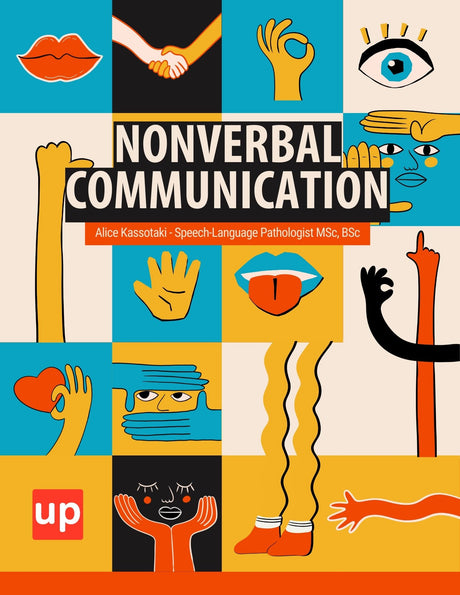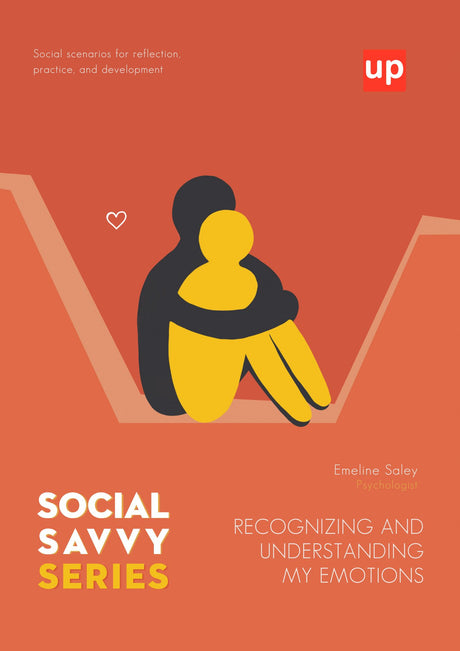For a parent, teacher, or caregiver, watching a child who is vibrant and talkative at home become silent in social settings can be profoundly confusing and concerning. This is often the reality for children with selective mutism (SM), a condition frequently misunderstood as shyness or defiance. In truth, it is a complex anxiety disorder that renders speech impossible in certain situations. The child is not choosing to be silent; their anxiety is creating a "freeze" response that physically prevents them from speaking. Understanding this is the first step on a journey toward helping them find their voice and build what can be thought of as their "brave muscles" for communication. This article provides a comprehensive guide to engaging, pressure-free activities designed to encourage speech, foster confidence, and empower children to overcome their communication challenges, one audacious step at a time.
Key Points
- Selective mutism is a complex anxiety disorder that prevents children from speaking in certain social situations despite being able to communicate comfortably in familiar settings like home.
- Engaging children in low-pressure, play-based activities and using gradual exposure techniques such as the "Brave Talking Ladder" can effectively encourage verbal communication and build confidence over time.
- Collaboration among parents, therapists, educators, and speech-language pathologists is essential to create a supportive and consistent environment that empowers children to overcome communication challenges and develop their brave talking skills.
Introduction: Comprehending Selective Mutism and the Trajectory Toward Audacious Articulation Through Activities for Selective Mutism

What is Selective Mutism (SM)?
Selective Mutism, as defined by the Diagnostic and Statistical Manual of Mental Disorders (DSM-5), is a childhood anxiety disorder characterized by a child’s consistent inability to speak in specific social situations where there is an expectation to speak (e.g., at school), despite speaking comfortably in other settings (e.g., at home). This is not a communication disorder related to language ability, such as speech sound disorders, but a manifestation of severe social anxiety. The condition, sometimes referred to as Situational Mutism, is relatively rare, affecting approximately 1 in 140 children. The link between SM and anxiety is undeniable; experts estimate that 75% to 100% of people with Selective Mutism also have social anxiety disorder. For the person experiencing SM, ongoing communication difficulties and persistent silence can erode a child's self esteem and may result in low self esteem, leading to significant social isolation if not addressed with empathy and evidence-based strategies.
Causes and Effects: Unraveling the Roots and Impact of SM
Selective mutism is a complex anxiety disorder that goes far beyond simple shyness or reluctance to speak. Its roots often lie in a combination of genetic predisposition, environmental influences, and psychological factors. Some children may have a family history of anxiety, while others might have experienced stressful life events or changes in their environment that heighten their sense of fear in social situations. For these children, certain social situations trigger intense anxiety, leading to a “freeze” response that makes verbal communication feel impossible, even though they are fully capable of speaking in comfortable settings.
The effects of selective mutism can be far-reaching. Children with SM often face significant communication challenges, which can impact their ability to form friendships, participate in classroom activities, and express their needs or feelings. Over time, this persistent silence can erode a child’s self-esteem and contribute to feelings of isolation or frustration. The ongoing struggle to communicate in certain social situations can also take a toll on a child’s overall mental health, increasing the risk of developing additional anxiety disorders or depressive symptoms. Recognizing the multifaceted causes and profound effects of SM is essential for supporting children as they work to overcome their fears and develop more effective communication skills.
The Significance of Play and Engagement
For children with SM, direct demands for speech can heighten anxiety and reinforce silence. Therefore, the path to verbal communication is paved with play and joyful engagement. Play-based activities create a low-pressure environment where communication can emerge naturally. These activities are specifically designed to engage children in communication without pressure, making participation enjoyable and stress-free. By focusing on fun and interaction, they help gradually build communication skills over time, moving from non-verbal cues to whispering and eventually to audible speech. It is important to tailor these activities to the child's comfort level, ensuring progress occurs without increasing anxiety. This approach builds a foundation of trust and positive association with social interactions.
Fundamental Methodologies for Fostering Communication

Cultivating a Low-Pressure, Conducive Milieu
The cornerstone of supporting a child with SM is creating an environment where they feel no pressure to speak. This means avoiding direct questions that demand a verbal response, refraining from pointing out their silence, and never showing disappointment. Instead, use commentary and open-ended statements (e.g., “Wow, you’re building a tall tower,” instead of “What are you building?”). Allow a 5-10 second wait time after you speak, giving the child ample opportunity to respond without feeling rushed. This low-pressure atmosphere reduces the anxiety that triggers the mutism, making it more likely that “Brave Talking” can occur. This approach supports the child's ability to communicate at their own pace.
Positive Reinforcement and Acknowledged Commendation
Positive reinforcement is a powerful tool in behavioral therapy for SM. It involves acknowledging and rewarding any step toward communication, no matter how small. This isn't about bribing a child to talk but about celebrating their bravery. Praise should be specific and descriptive (e.g., "I love how you pointed to the book you wanted" or "That was great how you whispered the color to me"). A structured system like "Brave Bucks"—tokens earned for brave communication attempts—can be highly motivating. These can be exchanged for small rewards, making the process of building communication skills tangible and exciting.
Progressive Exposure and Shaping: The "Audacious Articulation Ladder"
A core strategy in treating SM is gradual exposure therapy. This is best visualized as a “Brave Talking Ladder” (or Audacious Articulation Ladder), a personalized hierarchy of communication goals. The bottom rungs represent easier, non-verbal tasks in a safe environment, while the top rungs represent speaking to new people in new places. Each step on the ladder encourages the child to gently step outside their comfort zone, helping them build confidence through manageable challenges. A child progresses up the ladder one small step at a time, mastering each level before moving to the next. For example, a ladder might start with pointing, move to nodding, then mouthing words, whispering to a parent, whispering to a trusted peer, and so on. This methodical approach prevents overwhelm and builds a sense of mastery.
Engaging Exercises for Enhancing Self-Assurance in Domestic Environments (Level 1: Low-Pressure, Familiar Contexts)
"Audacious Companion" Role-Play Expeditions
Using puppets, dolls, or action figures, you can create scenarios that mirror real-life social interactions. Incorporating different characters into the role-play makes the activity more engaging and helps the child practice communication in varied scenarios. The child can speak through their toy, reducing the direct pressure on them. You can role-play ordering food, asking for help, or meeting a new friend. In this context, the toy becomes the “Audacious Companion,” doing the talking. This desensitizes the child to the social situation and allows them to practice the words and phrases needed for these interactions in a playful, indirect manner.
"Would You Rather" & "I Spy" Communicative Games
Simple, turn-based games that require minimal verbal output are excellent for early engagement. “I Spy” can be answered by pointing initially, then progressing to whispering the object’s name. “Would You Rather” questions with two visual choices allow for pointing, and eventually, one-word answers. These games use forced choice questions to encourage participation and reduce anxiety, especially for children with speech or communication challenges. They are predictable, fun, and naturally reduce the communication load, making it easier for a child to participate verbally. They also help develop social pragmatic language skills like turn-taking.
"Communication Card" Narrative Development and Choice Frameworks
Create a set of visual “Communication cards” for feelings, needs, or choices. These are a form of Augmentative and Alternative Communication (AAC) that provides a reliable way for a child to express themselves without verbal pressure. Communication cards are a valuable resource for helping children express themselves without verbal pressure. You can expand on this by using story-building cards (e.g., pictures of characters, settings, actions) and laying them out. The child can point to cards to build a narrative, and you can verbalize the story for them. This validates their communicative intent and can serve as a bridge to them eventually adding sounds or words to the story.
Whisper Challenges and Auditory Quests
Turn whispering into a game. A “Whisper Challenge” might involve whispering the name of an animal for you to guess, or whispering a secret into a “talking tube” (a paper towel roll). You can also use whisper challenges to help children express their emotions, such as whispering how they feel or naming an emotion. An “Auditory Quest” could be a scavenger hunt where you whisper clues for the child to follow. These activities normalize vocalization at a low volume, which is often a key step on the Brave Talking Ladder. It makes the physical act of using their voice less intimidating.
Broadening Communication: Exercises for Expanded Social Networks (Level 2: Gradual Exposure)

"Retail Simulation" and Practice Scenarios (Simulated and Actual)
Set up a pretend store or restaurant at home. Practice the entire interaction, from greeting the cashier to paying. Start with you playing the customer and the child as the silent employee. Gradually, encourage the child to whisper a word like “hi” or the price. These scenarios are specifically designed to encourage verbal communication in a supportive, low-pressure way. Once comfortable, you can move to a real store during a quiet time. The goal might be for the child to simply hand the money to the cashier, then progress to whispering “thank you” to you, and eventually, to the cashier. This structured practice prepares them for real-world social interactions.
Playdates with an "Audacious Companion"
Structured playdates are crucial for generalizing brave talking. Begin with a “fade-in” process, a technique related to Stimulus Fading. The child and parent start playing, and a trusted peer (an “Audacious Companion” or a child from a program like Brave Buddies) is slowly introduced into the activity. When parents and peers are involved in the activity, the child often feels more supported and confident, which can enhance their participation. The parent gradually fades out of the direct interaction. Choose activities with a clear focus, like building a specific LEGO set or playing a board game, which provides a natural script for interaction and reduces the need for spontaneous conversation.
"Show and Tell" with a Technological Enhancement
For a child who freezes during traditional “show and tell,” technology can be a powerful bridge. The child can pre-record themselves talking about their favorite toy or object at home. In the classroom or a small group, they can play the recording. This approach can be especially helpful for older children who may feel more comfortable using technology to share their ideas. This allows them to share their voice and ideas without the in-the-moment pressure of speaking live. The next step on their Brave Talking Ladder might be to stand beside the screen while it plays, and an even further step might be to whisper one word after the video ends.
Community Involvement and Collective Endeavors (Level 3: Supported Autonomy)
Library Expeditions: Becoming a "Book Companion"
The library is a fantastic, low-pressure public space. Start by having your child hand the library card to the librarian. The next goal might be for them to return a book to the drop box. Progress to a "Book Companion" role, where the child helps a younger sibling find a book and points to the pictures. Eventually, the goal could be for them to whisper the title of a book they want to you in the presence of the librarian. Each step builds comfort and confidence in a community setting.
Group Activities with Preliminary Arrangements
Enroll your child in a structured group activity like art, martial arts, or coding, but speak with the instructor beforehand. Explain SM and establish a plan. The initial goal should be participation, not speech. The instructor can be coached to avoid direct questions and to praise non-verbal contributions. This proactive communication sets the stage for success and prevents the child from being put on the spot, allowing them to acclimate to the group at their own pace.
Crucial Recommendations for Parents and Guardians

Perseverance, Consistency, and Commending Each Milestone
Progress for a child with SM is rarely linear; it involves steps forward and backward. The key is consistent, patient practice. Celebrate every single attempt at brave communication, whether it's a glance, a point, a whisper, or a word. Acknowledge the effort and courage it took. This unwavering support reinforces their "brave muscles" and builds the resilience needed to keep trying.
Collaborating with Specialists
A team approach is most effective. A speech-language pathologist (SLP) can help set realistic communication goals and integrate AAC tools. A mental health professional experienced in behavioral therapy, particularly exposure therapy, can design and guide the Brave Talking Ladder. Collaborating with your child's school is also vital to ensure strategies are consistent across settings. Resources like the Selective Mutism Association can provide lists of qualified professionals and connect you to a selective mutism support group.
Avoid Coercion or Bribery for Speech
There is a critical difference between positive reinforcement for brave attempts and bribery or pressure for speech. Phrases like "I'll give you a cookie if you say hello" increase anxiety and can damage trust. This approach frames speaking as a transactional demand rather than a natural outcome of feeling safe. Stick to reinforcing the small, voluntary steps the child makes.
Modeling Resilient Communication
Children learn by watching. Model confident, calm communication in your own social interactions. If you make a mistake while speaking, correct it calmly and move on. This shows your child that communication doesn't have to be perfect. You can also model how to handle situations where you feel anxious, verbalizing your feelings and coping strategies (e.g., "I'm a little nervous about this phone call, so I'll take a deep breath first").
Endorsement and Synergy
Advocating for your child is paramount. Educate family, friends, and school staff about SM, emphasizing that it is an anxiety disorder, not willful behavior. Share the strategies that work and explain the importance of a no-pressure approach. When everyone in a child's life is using the same supportive methods, the child feels safer, and progress is accelerated.
Conclusion
The journey for a child with selective mutism is a marathon, not a sprint. It is a process of patiently building "brave muscles" through positive, engaging, and pressure-free experiences. By transforming communication into a game, celebrating every small victory, and creating a supportive environment, we can help children dismantle the wall of anxiety brick by brick. The activities outlined here, from whisper challenges at home to supported community outings, are tools to build a Brave Talking Ladder tailored to your child's unique needs. With consistency, collaboration with professionals like a speech-language pathologist, and boundless empathy, you can empower your child to move from silence to whispers, and ultimately, to confident speech, finding their voice in a world that is waiting to hear it.
Frequently Asked Questions
What is selective mutism?
Selective mutism is an anxiety disorder in which a child who is normally capable of speech is unable to speak in certain social situations, such as at school or in public, despite speaking comfortably at home or in familiar settings.
How can activities for selective mutism help my child?
Activities designed for selective mutism create low-pressure, engaging environments that encourage verbal communication gradually. They help children build confidence, reduce anxiety, and practice speaking in a fun and supportive way.
What role do parents and caregivers play in supporting a child with selective mutism?
Parents and caregivers are crucial in providing a consistent, encouraging environment. They can reinforce therapy strategies at home, celebrate small communication successes, and avoid pressuring the child to speak, which can increase anxiety.
Are there specific games or exercises recommended for children with selective mutism?
Yes, games such as role-play with toys, “Would You Rather,” whisper challenges, and communication card activities are effective. These encourage participation without pressure and help children practice speaking in a natural, playful context.
How long does it take for a child to overcome selective mutism?
The timeline varies widely depending on the child’s individual needs, the severity of anxiety, and the consistency of intervention. Progress is often gradual, with small steps building over time toward confident speech in various social settings.
Can selective mutism be outgrown without treatment?
Selective mutism typically does not resolve on its own and may persist if left untreated. Early intervention with appropriate therapies and supportive activities greatly improves the likelihood of overcoming communication barriers.
What professional support is available for children with selective mutism?
Speech-language pathologists, mental health therapists specializing in anxiety and behavioral therapies, and educators trained in SM strategies can provide tailored support. Collaboration among these professionals and families is key to effective intervention.
How can I encourage brave talking without making my child feel pressured?
Focus on positive reinforcement, celebrate all attempts at communication, and avoid direct demands for speech. Use open-ended comments, allow plenty of response time, and create fun, engaging activities that naturally invite verbal participation.
What should I do if my child refuses to participate in selective mutism activities?
Respect their comfort level and avoid forcing participation. Gradually introduce activities at the child’s pace, and consider consulting a professional for tailored strategies. Patience and consistency are essential for building trust and progress.
Are selective mutism activities suitable for older children?
Yes, activities can be adapted to suit different ages and developmental levels. Older children may benefit from technology-assisted activities, structured group interactions, and peer-supported exercises to encourage communication in a comfortable and engaging way.
Original content from the Upbility writing team. Reproducing this article, in whole or in part, without credit to the publisher is prohibited.
References
-
American Psychiatric Association. (2013). Diagnostic and Statistical Manual of Mental Disorders (5th ed.). Arlington, VA: American Psychiatric Publishing.
-
Bergman, R. L., Piacentini, J., & McCracken, J. T. (2002). Prevalence and description of selective mutism in a school-based sample. Journal of the American Academy of Child & Adolescent Psychiatry, 41(8), 938-946.
-
Cohan, S. L., Chavira, D. A., & Stein, M. B. (2006). Practitioner review: Treatment of selective mutism in children and adolescents. Journal of Child Psychology and Psychiatry, 47(11), 1085-1097.
-
Kristensen, H., & Torgersen, S. (2008). Selective mutism: A review of the literature. European Child & Adolescent Psychiatry, 17(6), 360-366.
-
Shipon-Blum, E., & Heyman, M. (2005). Selective mutism: A review of the last 10 years. Journal of the American Academy of Child & Adolescent Psychiatry, 44(10), 1049-1054.
-
National Institute of Mental Health. (2021). Selective Mutism. Retrieved from https://www.nimh.nih.gov/health/topics/selective-mutism
-
Oerbeck, B., Stein, M. B., Wentzel-Larsen, T., & Kristensen, H. (2014). Selective mutism: A review of the literature. European Child & Adolescent Psychiatry, 23(6), 307-316.
-
Schwartz, S., & Iacono, T. (2019). Selective Mutism: An Update on Assessment and Treatment. Current Psychiatry Reports, 21(10), 100.
-
The Selective Mutism Association. (n.d.). Resources and Support. Retrieved from https://selectivemutism.org/resources/
-
Viana, A. G., Beidel, D. C., & Rabian, B. (2009). Selective mutism: A review and integration of the last 15 years. Clinical Psychology Review, 29(2), 57-67.









